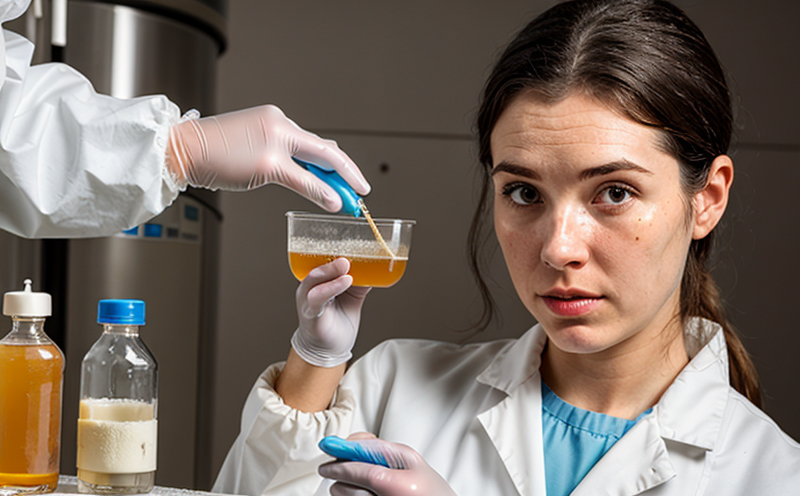USP Identification of Moulds and Yeasts in Pharmaceuticals
The United States Pharmacopeia (USP) 1 [1] General Chapter <1113>, titled "Identification of Moulds and Yeasts," is a critical part of ensuring the quality, safety, and efficacy of pharmaceutical products. This chapter provides detailed methodologies to identify molds and yeasts that may be present in drug substances or excipients used in pharmaceutical formulations.
The identification process outlined in USP involves several key steps. Initially, a sample is collected from the source or during processing, which can include raw materials, intermediates, finished products, or packaging materials. The sample must be prepared meticulously to avoid contamination and ensure accurate results.
The preparation typically entails diluting the sample with appropriate media such as potato dextrose agar (PDA) for molds or Sabouraud dextrose agar (SDA) for yeasts. These media support the growth of fungi, allowing colonies to develop over a specified period under controlled conditions. Once colonies have formed, they are visually examined for characteristics like color, texture, and morphology.
The next step involves the use of advanced identification techniques such as microscopy and molecular methods. Microscopy can provide detailed morphological features that help differentiate between various genera and species. For more precise identification, DNA-based tests (PCR followed by sequencing) may be employed to match the genetic profile against reference databases like GenBank.
It is crucial to document each stage of the process meticulously. This includes maintaining a chain of custody for the sample, recording environmental conditions during incubation, and describing all observations made during microscopic examinations or DNA analysis. The final report should include comprehensive details about the identification process, including any discrepancies observed between initial visual assessments and subsequent confirmatory tests.
The importance of this testing cannot be overstated in ensuring compliance with regulatory requirements, particularly for manufacturers aiming to meet international standards like USP . Accurate identification ensures that only pure cultures are used in further processing steps, thereby reducing the risk of contamination and potential adverse effects on patients. Moreover, it helps pharmaceutical companies comply with Good Manufacturing Practices (GMP) guidelines by providing robust evidence supporting their quality control measures.
In summary, USP serves as a cornerstone for maintaining high standards in biopharmaceutical manufacturing processes. By employing rigorous identification methods early in the production cycle, manufacturers can mitigate risks associated with microbial contamination and ensure that only suitable raw materials are incorporated into final formulations.
Eurolab Advantages
At Eurolab, we pride ourselves on offering unparalleled expertise in microbiological testing across a wide range of industries. Our team of highly trained professionals brings extensive experience in handling complex samples and interpreting results accurately. With state-of-the-art facilities equipped with the latest technology, our laboratory ensures consistent quality throughout every stage of your project.
Our commitment to excellence extends beyond just technical capabilities; we also place great emphasis on customer satisfaction. From initial consultation through final delivery of reports, we strive to deliver exceptional service tailored specifically to meet each client’s unique needs. Whether you require routine testing or specialized projects involving novel methods, our dedicated staff will work closely with you every step of the way.
Moreover, Eurolab is accredited by several reputable bodies including ISO 17025 and meets stringent regulatory requirements set forth by authorities such as FDA and EU directives. This accreditation guarantees that all tests performed within our laboratory adhere to strict quality control protocols ensuring reliability and accuracy in every result produced.
Why Choose This Test
The USP Identification of Moulds and Yeasts test is essential for maintaining the integrity and safety of pharmaceutical products. By identifying mold and yeast contaminants early, manufacturers can take corrective actions promptly to prevent further contamination or degradation of their product quality.
This identification process plays a vital role in ensuring compliance with stringent regulatory requirements imposed by organizations like FDA (Food and Drug Administration) and EMA (European Medicines Agency). Non-compliance could lead to significant penalties including recalls, withdrawals from marketplaces, and potential legal actions against the company involved.
The ability to accurately identify molds and yeasts also contributes significantly towards enhancing product shelf-life. Once identified, these microorganisms can be controlled or eliminated effectively through appropriate sterilization processes or changes in formulation ingredients which may inhibit their growth.
Furthermore, accurate identification aids in risk assessment during drug development phases by providing insights into potential sources of contamination throughout the supply chain. This information enables manufacturers to implement targeted measures aimed at reducing risks associated with microbial contamination thereby protecting public health.
The USP test is particularly beneficial for companies developing new drugs or reformulating existing products where even trace amounts of contaminants could have severe implications on patient safety. It allows for early detection and resolution of issues before they escalate into larger problems requiring more extensive interventions later down the line.
Competitive Advantage and Market Impact
The ability to accurately identify molds and yeasts in pharmaceutical products not only ensures compliance with regulatory standards but also provides a significant competitive edge for manufacturers operating within this industry. In today’s highly regulated environment, companies that can demonstrate robust quality control measures are better positioned to gain market share.
By implementing USP Identification of Moulds and Yeasts into their operational processes early on, pharmaceutical firms signal their commitment to delivering safe and effective products. Such actions instill confidence among consumers, healthcare providers, investors, and other stakeholders who rely heavily upon reliable information regarding product quality.
In terms of market impact, accurate identification helps reduce the likelihood of recalls which are costly and damaging to brand reputation. Recalls not only involve financial losses but also erode consumer trust leading to reduced sales volumes over time. By proactively addressing potential issues via thorough testing methods like USP , companies can minimize these risks significantly.
Additionally, compliance with international standards enhances export opportunities by meeting requirements set forth in different regions across the globe. This opens up new markets for pharmaceutical manufacturers willing to invest in advanced quality assurance practices such as those outlined in USP .





